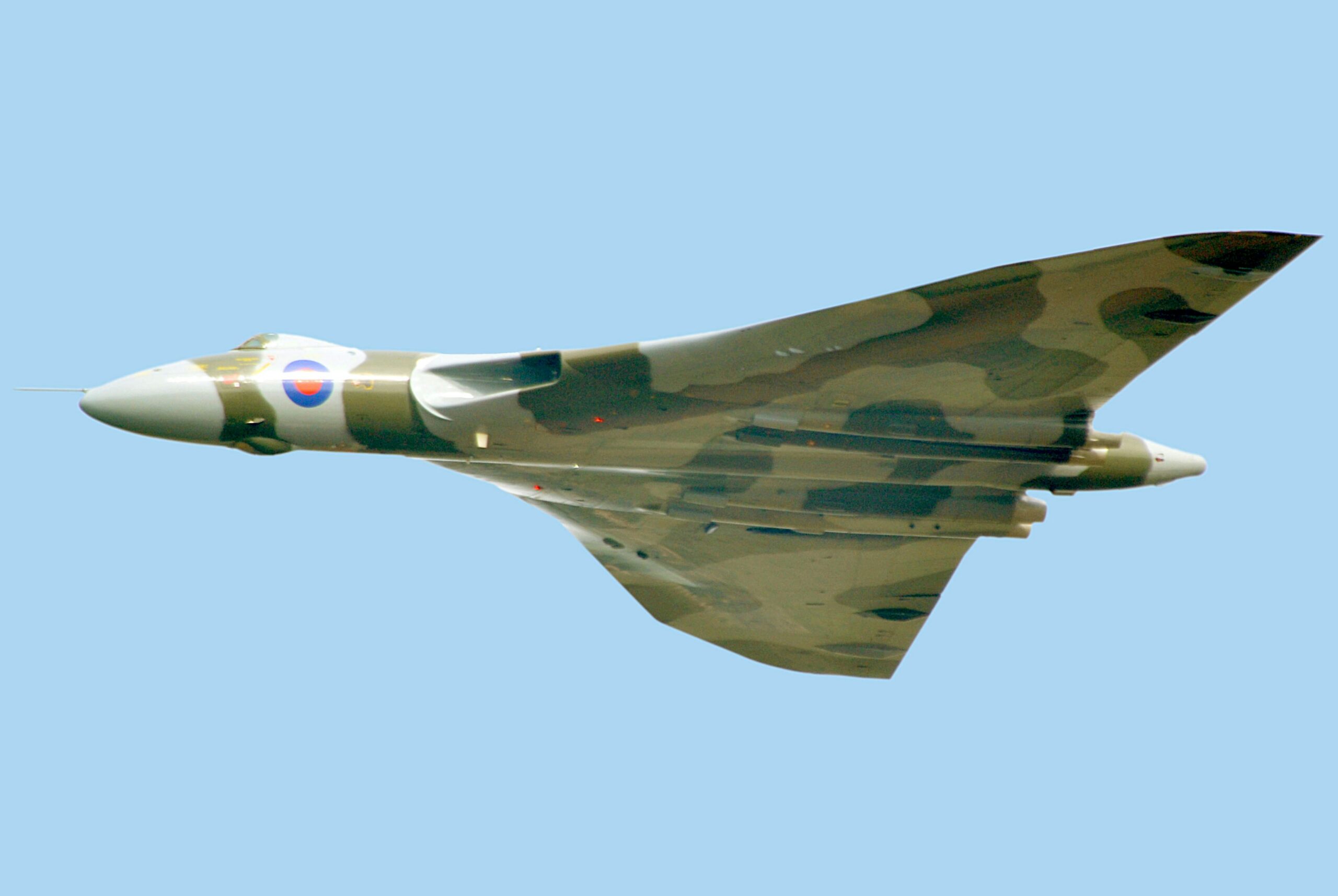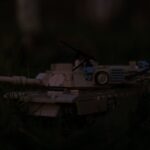Air forces kept asking one thing—more weight inside, not outside. External pylons break the jet’s stealth skin. That means enemy radar might ping it faster, making it vital to fit more weapons inside F-35 bay without sacrificing low observability. Leaders in the Pacific and Europe saw threat nets grow dense. They wanted heavier guided bombs tucked inside, safe from view.
Specialists tracked past loads: the jet hauled smart bombs and AIM-120s fine. Yet bunker-busting rounds stayed too fat. Commanders felt blocked; big tasks still required non-stealth fighters. The new bulkhead tries to close that gap quicky. It lets the F-35 keep a low profile yet smash thicker walls.
Bulkhead in Focus, Metal in Motion
Engineers added beef to the FS425 ring. They thickened two ribs, shifted joint holes few millimeters, and swapped alloy grade. The numbers sound minor, but stress charts changed a lot. Early stress sims showed crack points near bay hinge; designers moved bracing to kill that risk.
Key tweaks
- 7 % thicker web on the upper chord
- Switch from 7050-T7451 to 7085-T76511 alloy, tougher at high heat
- Two added gussets around latch mounts
- New fastener spread, 23 bolts per side not 19
Those bits seem tiny, but weight margin gained hits 450 lb. That opens room for loads near 2 000 lb inside one bay.
Lab Trials, Bench Rattles
Lockheed pulled one fuselage barrel off the Fort Worth line. They pressed it on a rig nick-named Mule-8. Hydraulic jacks yanked and twisted the shell through 12 000 cycles. A few strain gauges popped out mid-run, crew taped them back. Data lines stayed noisy; analysts still dug clear trend.
Cold-soak tests hit minus-55 °C then bounced to plus-90 °C. Fast temp swings mimic high climb then low supersonic sweep. Some paint flaked near seam, inspectors flagged it yellow not red. Vibes table later shivered avionics racks with 120 Hz pulse. Boards stayed live; one loose wire got solder re-touch.
Flight Checks Without Drama
A single F-35A, tail AF-237, flew the first mod set in January 2024. Takeoff weight topped 70 000 lb. Pilot rolled 7g turn and logged nothing odd. Landing at Edwards came smooth though brake temp ran few degrees higher. Tech crew chalked that to the extra mass inside.
Carrier variant CF-92 touched deck on the USS Carl Vinson in June. The jet slammed arrestor same as always; bulkhead showed no hairline splits under post-flight borescope.
Broader Mission Shake-Up
Bigger bombs in the belly switch how planners design sorties. A four-ship F-35 cell can now wipe hardened bunkers that once needed B-2 help. Same cell keeps radar ghost-quiet while crossing dense SAM belts. That shortens early-hour strike lists and frees tanker slots. Commanders like fewer tails in the sky, less chatter on net.
Ships at sea gain too. F-35C can sneak heavier anti-ship missile within hull. Task groups sail nearer threat coast yet keep strike reach long. Blue water ops crave that edge when peer fleets toss big radars around straits.
Allied Views, Local Tweaks
Italy’s air staff cheered news fast. They eye Dal Molin base as strike hub against bunkers in rough hills. The mod grants them deeper punch without new type rating. Norway’s squadron tried cold-weather loads this winter; they left doors open six minutes on ramp, hinges held though snow blew inside.
Japan thinks harder about maritime gaps south of Okinawa. Heavier JSM Block 2 fits snug after the bulkhead swap. Planners say one aircraft now covers two nav points. Australia ran range drill over Coral Sea: three jets, two tank stops, nine mock targets gone. Crews called the bay “packing a real wallop”.
Supply Chain Juggle
Bulkhead metal shifts mean mills adjust heat lines. A small Ohio supplier had to swap tooling; first cast came warped by half a mill. They scrapped it, ate the cost. Yet program office claims rate hit steadied by August. Fastener maker in Italy drills tighter hole pitch; one jig broke, workers rigged wooden spacer till new part arrived.
Training sheets updated for every shop: torque spec 235 in-lb not 220. One mechanic missed note, snapped a bolt. Quality team caught it pre-seal. Mistakes pop, but none lethal. Rough edges kind of normal when fleet steps up weight rating.
Next-Wave Weapons in Sight
Rumor mills buzz about powered glide bomb topping 2 600 lb. No official file yet. Still, Lockheed test fit silhoutte foam last fall. Bay doors cleared with 12 mm spare. Thermal bleed lines might need reroute though. Directed-energy pod also pitched; engineers debate coolant path through keel. Stronger FS425 buys wiggle room.
Hypersonic dart talk stays hush. Mass and length both tall order. Yet insiders note the new rib pattern leaves anchor spot blank on lower web—clearly planned for future lug. Words stay cagey, but shape outlines tell tales.
Software Matches Steel
Extra weight alone can drag. Flight-control team pushed patch OFP 13.3. It tweaks pitch-rate gain and nozzle angle table, partly to balance added payload and avoid strain tied to F-35 engine issues. Pilot note says stick feels same unless full fuel and heavy bay; then pitch-up needs tad more pull. Test driver wrote margin’s fine, “nothing scary”.
Auto logistics network (ALIS) tag set gained new part numbers. Maintainers hated extra clicks, but system must track old and new bulks. One clerk typed wrong dash code, supply shipped legacy piece, caused two-day slip. Program office blasted memos, fixed label set.
Cost Horizon
Lockheed keeps the sticker hushed. Sources whisper around $2.1 m per jet retro. That covers barrel slice, door actuator kit, wiring shim, and extra labor hours. Fleet retrofit aims at 203 jets U.S. side, 112 overseas first wave. Budget hawks groan, yet brass notes that the F-35 Fighter Jet program costs are offset by the fact that the same jets now hit bigger aim without drag bags, so cost trades fair.
March 2025 Update
Many line jets now leave factory with beefed bulkhead baked in, part of critical F-35 upgrades in 2025 aimed at boosting payload and mission flexibility. Lot 18 deliveries for Italy, Australia, plus two USAF squadrons carry tag “Mod Green”. Pilots feel little diff in cockpit other than new payload menu page. They load 2 000-lb JDAM, JASSM-ER, or AIM-260 heavy can.
Fresh Findings
- Norwegian winter trials: minus-32 °C, no bay latch freeze
- Navy deck tests: 47 traps, zero crack growth found
- Long-haul Pacific hop: 8.9-hr sortie, fuel burn up 1.4 % vs baseline
Analysts say numbers fall inside model band, so fleet thumbs up.
Electronic Tricks Inside
Some crews slipped spare space to new EW pod. It sits where bomb would ride, carries antennas and battery stack. Trial runs over range jammed X-band search radar for 42 sec. Data still early, but concept hints F-35 might spoof while holding bombs on other side bay. Mix options sound tasty for planners.
Maintenance Angle
Ground teams rewrote torque logs, inspect interval after 400 cycles not 600. Extra load leads bigger strain, so checks tighten. One squad in Luke AFB found tiny fretting mark near stringer, filled stop-drill 2 mm. No fleet-wide alert. Tech manual patch ships next quarter.
Paint shop noted sealant creep on thicker rib edges. They switched brush tip size. Minor thing, still counts. Every tweak ripples some where else.
Strategic Weight
More punch per jet means fewer jets out the gate first night. Sortie math drops; tanker demand dips few percent. That helps logistic chain stay slim in hot zone. Deterrence angle grows too: rival radars know stealth bomber may lurk armed big, they hedge more caution, maybe delay move. Sometimes war won by what foes fear not what they see.
Future Path, No Rest
Block 4 suite keeps rolling. New display glass, engine core upgrade, cloud data link—they ride same timeline, hinting at radical F-35 upgrades that aim to keep the jet relevant beyond current threats. FS425 fix proves airframe still holds untapped headroom. Program chiefs vow to hunt next bottleneck before threat does. Word around pentagon halls says next look at wingbox fuel bay.
Lockheed site posts sparse blurbs, but watchers scrape contract leads. Any bump on machine orders hints at looming part. People bet on door actuator batch soon, maybe signal even wider bay ops.
Closing Outlook
Stealth stayed king, yet weight rules warhead power. By hardening one ring of metal, the F-35 reclaims payload without flashing on scopes. Early field tales read solid, few scuffs, no show-stops. As fleets swap in reinforced shells, mission writers will stretch their playbook wider. Jet looks set to stay front-line for years, still sneaky, now heavier-handed.
REFERENCE SOURCES:
- https://www.navalnews.com/naval-news/2025/03/f-35-set-to-receive-critical-upgrades-in-2025-production-lots/
- https://en.wikipedia.org/wiki/Lockheed_Martin_F-35_Lightning_II
- https://www.c-130.net/forum/viewtopic.php?f=54&t=55890&view=unread
- https://www.secretprojects.co.uk/threads/lockheed-martin-f-35-lightning-ii-joint-strike-fighter-jsf.17732/page-46
- https://bulgarianmilitary.com/2023/03/25/there-will-now-be-six-air-to-air-missiles-in-the-f-35-belly/
- https://www.twz.com/air/israeli-f-35s-first-to-use-beast-mode-in-combat
- https://www.defensedaily.com/greater-load-outs-of-advanced-weapons-for-f-35-to-start-this-year-with-lot-15/weapons/
- https://breakingdefense.com/2019/05/lockheed-says-it-can-fit-2-more-missiles-in-f-35-bay/



